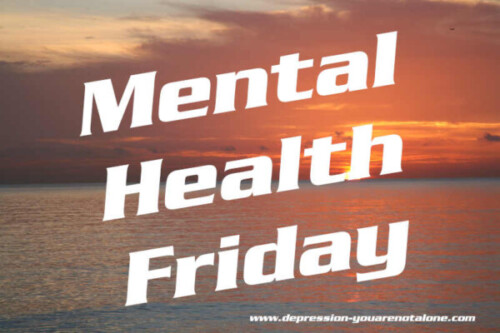Mental Health Friday 2023-08-11
On Mental Health Friday, we post, in alphabetical order, one per week, information on mental health disorders. Mental Health Friday is for informational purposes only, and is in no way meant to diagnose, treat or cure any disease. Please do not self diagnose and seek professional help for what ails you.
Link: FindTreatment.gov is an online source of information for persons seeking substance use and/or mental health treatment facilities in the United States or U.S. Territories.
Mixed Episode
Editorial Team
As of my last knowledge update in September 2021, “Mixed Episode” is a term often used in the context of bipolar disorder to describe a period during which an individual experiences symptoms of both mania and depression simultaneously or in rapid alternation. It’s important to note that terminology and understanding in the field of psychology and psychiatry can evolve, so it’s advisable to consult up-to-date sources or professionals for the latest information.
Bipolar disorder is a mental health condition characterized by extreme mood swings. These mood swings typically alternate between periods of elevated, energized states known as manic or hypomanic episodes and periods of low mood and energy called depressive episodes. Bipolar disorder is classified into several types, including Bipolar I, Bipolar II, and Cyclothymic Disorder, depending on the severity and duration of manic and depressive symptoms.
A mixed episode occurs when an individual experiences both manic or hypomanic symptoms and depressive symptoms at the same time or in rapid succession. This can be a particularly challenging and distressing state, as the individual may feel an intense blend of emotions and conflicting thoughts. Here’s a breakdown of the key components of a mixed episode:
- Manic/Hypomanic Symptoms:
- Increased energy and activity levels.
- Elevated mood or irritability.
- Racing thoughts or rapid speech.
- Decreased need for sleep.
- Impulsivity and risky behavior.
- Grandiose beliefs or inflated self-esteem.
- Difficulty focusing on one task.
- Depressive Symptoms:
- Persistent sadness or low mood.
- Feelings of worthlessness or guilt.
- Loss of interest or pleasure in activities.
- Fatigue or loss of energy.
- Trouble concentrating or making decisions.
- Changes in appetite or weight.
- Suicidal thoughts or behaviors.
During a mixed episode, an individual might experience moments of intense euphoria or extreme irritability, often accompanied by racing thoughts and agitation. They may have the energy and impulsivity associated with mania but also feel the hopelessness and despair of depression. This combination can lead to heightened emotional turmoil and an increased risk of impulsive actions or self-harm.
Mixed episodes can be particularly tricky to diagnose and treat because the presence of both manic and depressive symptoms can mask each other. It’s essential for individuals experiencing such episodes to seek professional help. A mental health professional, such as a psychiatrist or psychologist, can conduct a thorough evaluation, diagnose the specific type of bipolar disorder, and recommend appropriate treatment strategies.
Treatment for mixed episodes may involve a combination of mood-stabilizing medications, psychotherapy (such as cognitive-behavioral therapy), and lifestyle adjustments. The goal is to stabilize mood, manage symptoms, and reduce the risk of harmful behaviors. If you or someone you know is struggling with symptoms of bipolar disorder or a mixed episode, it’s important to reach out to a healthcare provider for accurate diagnosis and personalized treatment recommendations.

